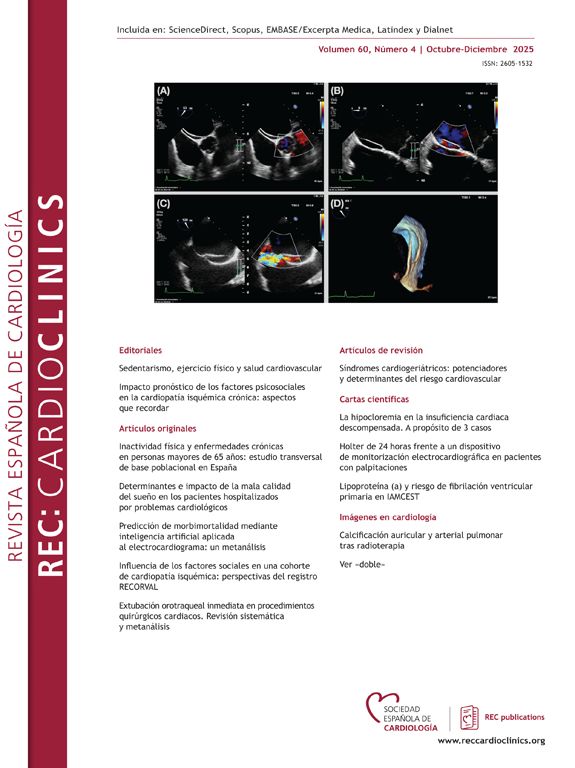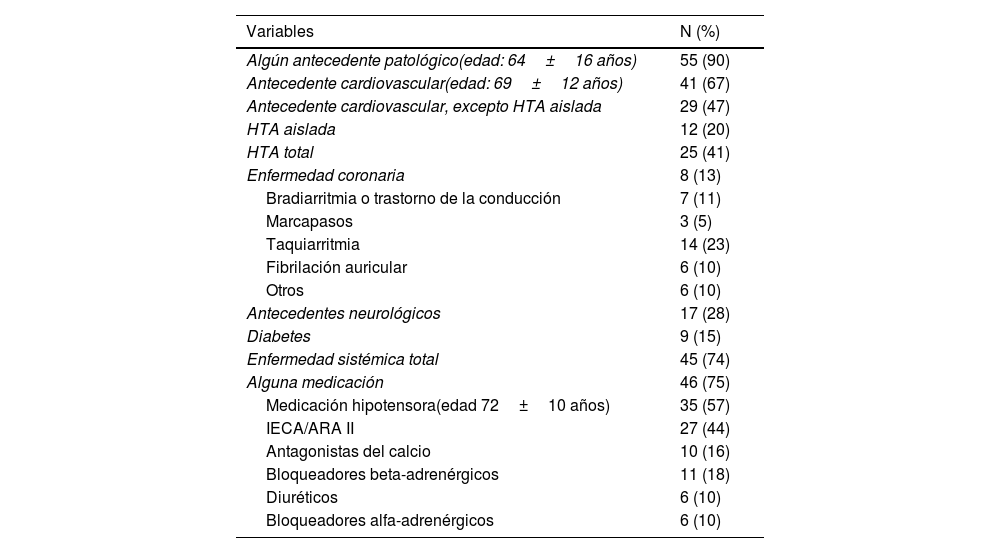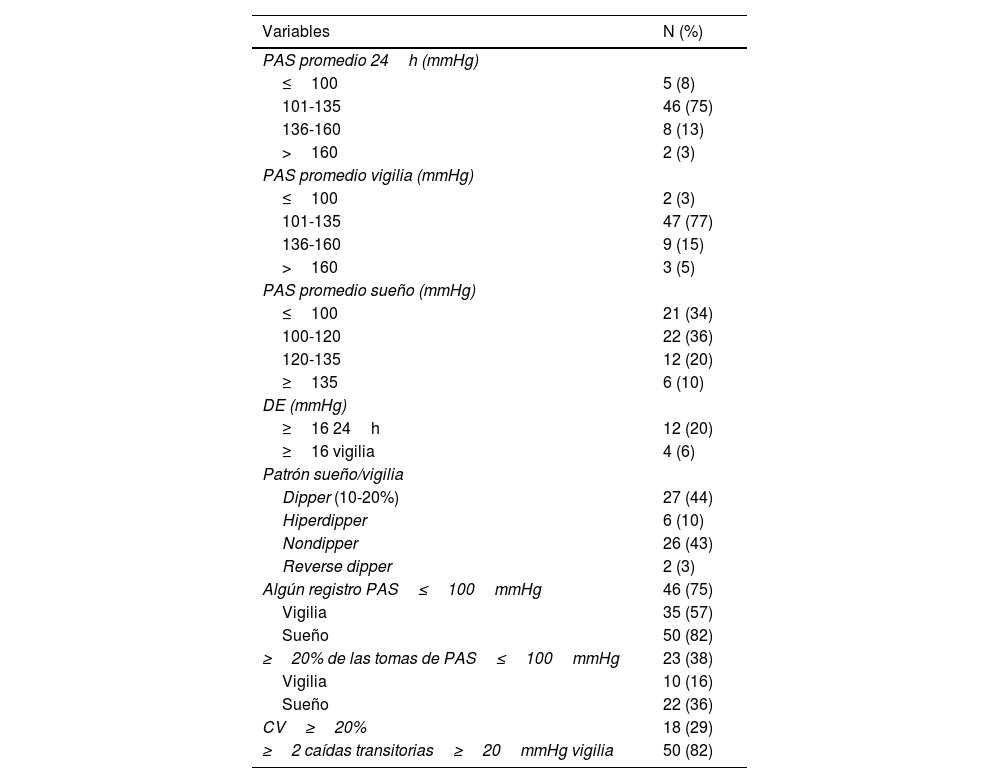Tanto la monitorización ambulatoria de la presión arterial (MAPA) como la prueba de basculación (PB) pueden identificar la susceptibilidad hipotensiva que predispone al síncope. El objetivo de este trabajo fue establecer la prevalencia de hipotensión en la MAPA y la PB y la concordancia de los resultados entre ambos métodos.
MétodosSe incluyó a pacientes≥18 años con síncope sometidos a un PB (45min a 75º). Se llevó a cabo una MAPA en fechas diferentes. Los criterios de hipotensión fueron: en PB, PB (+) o detección de presión arterial sistólica≤100mmHg durante el estudio, resultado de una caída con respecto a la presión arterial sistólica basal; en la MAPA, ≥2 caídas≥20mmHg con respecto a la previa alcanzando una presión arterial sistólica≤100mmHg.
ResultadosSe estudiaron 61 pacientes (62,5±16,8 años, 39 mujeres [64%]). La PB fue positiva en el 41%. Adicionalmente, durante la PB, la hipotensión se detectó en el 18% de los pacientes y la hipotensión por la MAPA en el 51% de ellos. Combinando ambos métodos, se detectó hipotensión en el 79% de la población (48 pacientes). Ambos estudios concordaban en 32 pacientes (52%) (índice kappa de Cohen: 0,04). La hipotensión se identificó solo por la PB en el 28% de los pacientes y en el 20% solo por la MAPA.
ConclusionesMediante una estrategia que combina PB y MAPA, se detectó hipotensión en las tres cuartas partes de esta población con síncope. Ambos métodos resultaron ser complementarios tanto para elaborar una sospecha diagnóstica como para también orientar el abordaje terapéutico de estos pacientes.
Both ambulatory blood pressure monitoring (ABPM) and tilt-test (TT) can identify the hypotensive component that predisposes to syncope. The aim was to establish the prevalence of hypotension in ABPM and TT and to establish the concordance of the results between both methods.
MethodsPatients≥18 years with syncope in whom it was decided to perform a TT (45min at 75º) were included. An ABPM was performed on different dates. The criteria of hypotension were: in TT, TT (+) or detection of systolic blood pressure≤100mmHg during the study, resulting from a drop respect to baseline systolic blood pressure; in ABPM, ≥2 falls≥20mmHg with respect to the previous one reaching systolic blood pressure≤100mmHg.
ResultsA total of 61 patients were studied (62.5±16.8 years, 39 women [64%]). TT was positive in 41% of the patients. Additionally, during TT, hypotension was detected in another 18% of patients and hypotension by ABPM was observed in the 51%. Combining both methods, hypotension was detected in 79% of the population (48 patients). Both studies were concordant in 32 patients (52%) (Cohen kappa index: 0.04). Hypotension was identified in 28% of patients only by TT and in 20% only by ABPM.
ConclusionsUsing a strategy combining TT and ABPM, hypotension was detected in three quarters of this population with syncope. Both methods proved to be complementary not only to develop a diagnostic suspicion but also to guide the therapeutic management of these patients.
Article
Use datos de acceso a SEC en el menú Acceder.
Si es socio de la Sociedad Española de Cardiología y no puede acceder con sus claves, escriba a rec@cardioclinics.org.
Use the Society's website login and password here.
If you are member of SEC and you have some problems with your login data, please contact with rec@cardioclinics.org.















